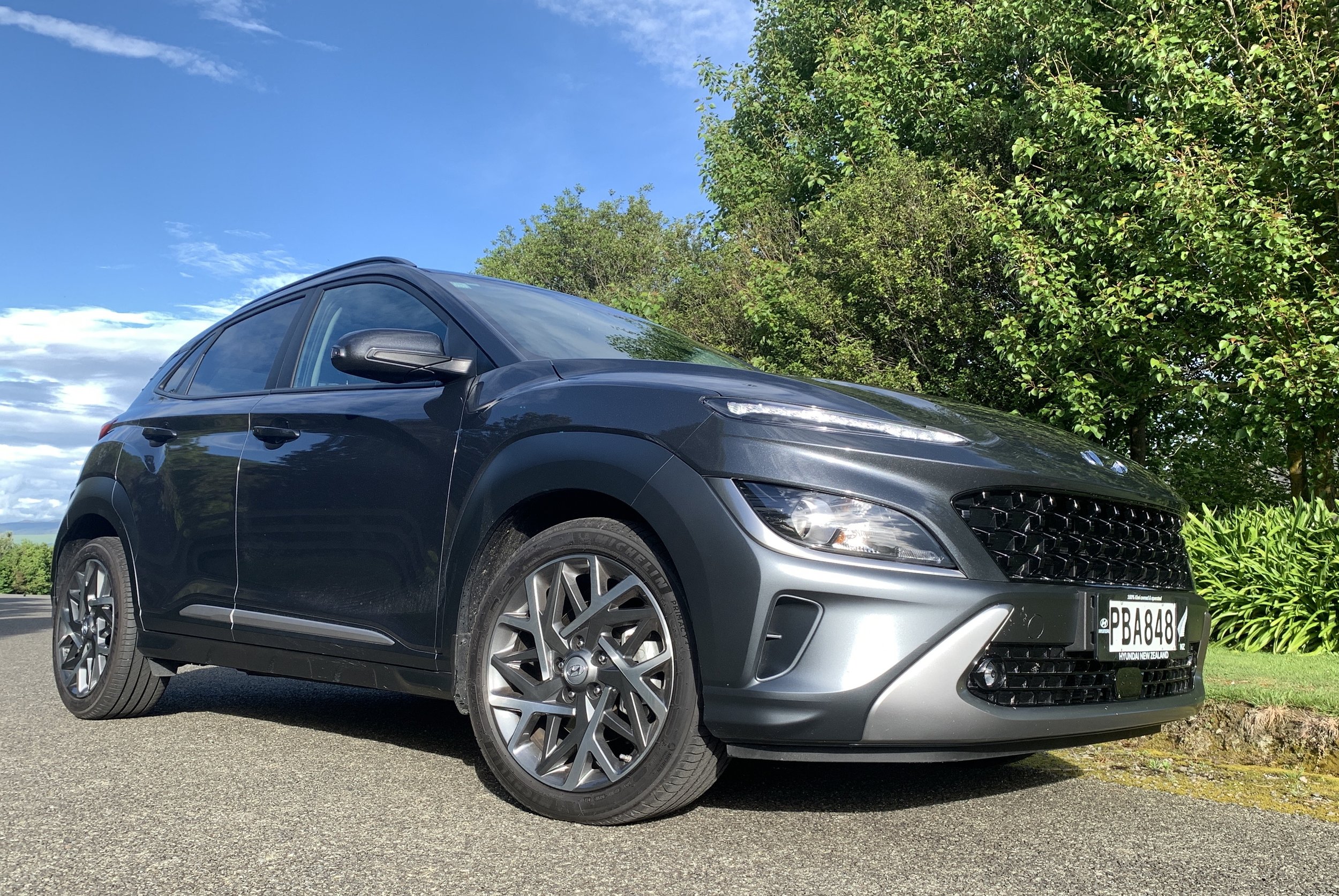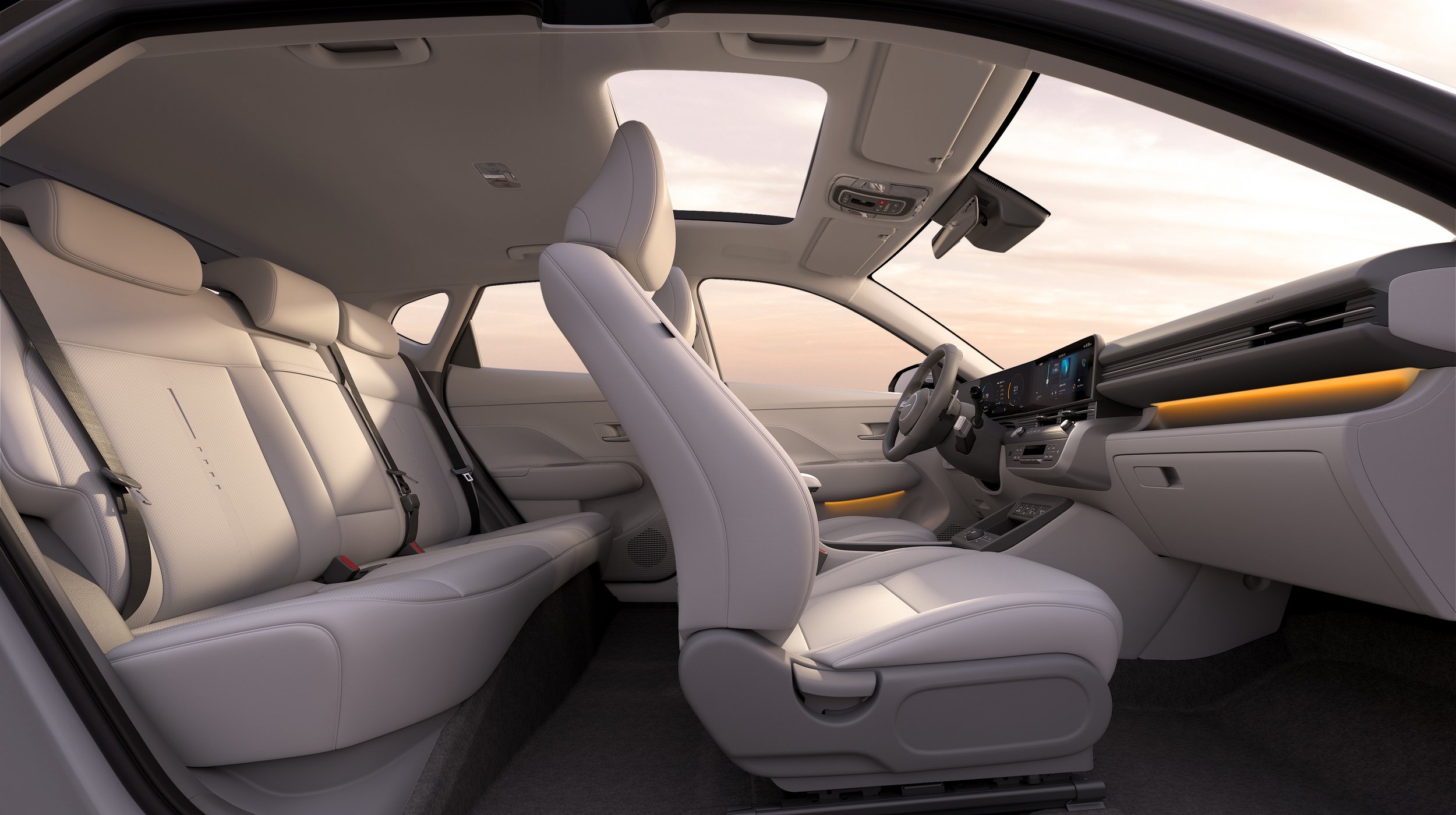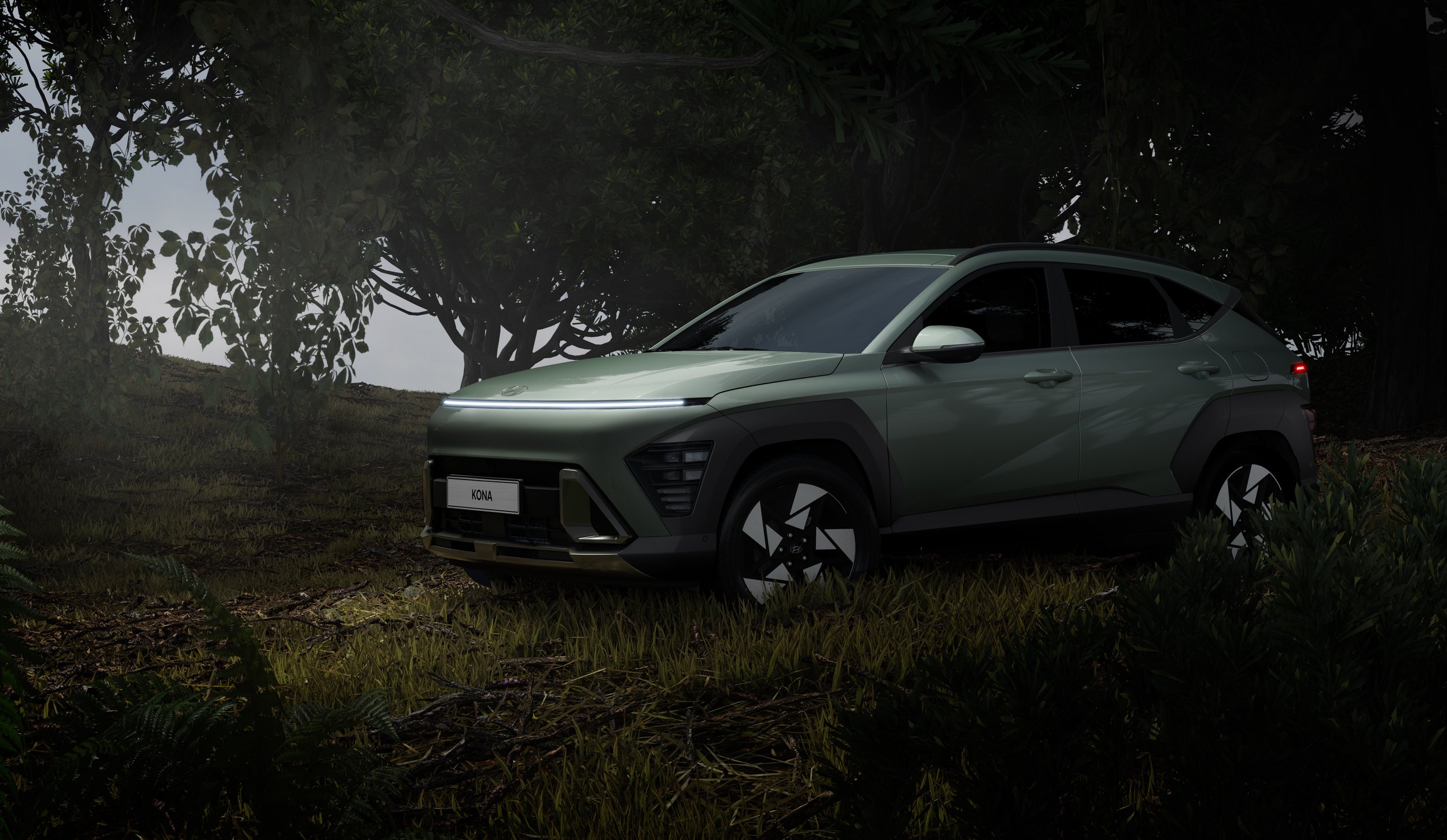New Kona revealed, expected in 2023
/Second-generation car has been designed foremost for electric, but will continue with hybrid and pure petrol as well.
BOLD frontal styling cues that debuted on the Nexo hydrogen car and shifted to the Staria people mover and van seem an established future look for Hyundai, having now incorporated into the new Kona compact crossover, unveiled internationally today and expected to hit New Zealand next year.
Hyundai Motor Company is only talking about the styling for now; information about the specifics of the drivetrains remains under wraps.
A marked departure from the look of the current car (below), the futuristic design for this second generation model, which switches to a new platform, is also inspired by its electric vehicles, though it clearly isn’t adhering to the themes delivered on the Ioniq 5 and Ioniq 6.
The new line will deliver in all-electric, hybrid electric and internal combustion engine formats, with a universal architecture for all and unique styling for each, but the sportiness this time seems to stop with N-Line.
The fully feral current Kona N seems unlikely to have a future equivalent, with the performance 2.0-litre petrol having fallen foul on Europe’s impending new emissions regime.
Hyundai New Zealand has yet to offer any comment about the car or the national release timing schedule, but other right-hand drive markets – including Australia – are prepped for 2023 availability.
Previous Kona started as a petrol car then developed into an electric. With the new, the development cycle has reversed – it was designed foremost for batteries but has been adapted to also take fossil fuel-involved elements.
HMC head office in Seoul said the car is a reflection of its commitment to sustainable mobility and technology-led design thinking to expand its EV offerings, while also meeting the diverse mobility needs of its customers with a variety of powertrains.
“Upscaled with Kona's unique character, the all-new Kona confidently expresses its bold and dynamic presence,” according to SangYup Lee, executive vice president and head of the Hyundai Design Centre at Namyang, south of South Korea’s capital.
“Kona has evolved in every respect to embrace an even wider range of diversity, to become a true lifestyle supporter."
The car measures approximately 4355mm long and 1825mm wide, riding on a 2660mm wheelbase – a substantial 150mm longer overall, 25mm wider and 60mm longer between the front and rear wheels than the old model. This lends dynamic benefit but also, and equally importantly, allows for a more comfortable and commodious cabin, thus addressing a shortcoming of the current car.
HMC says the car “has evolved into a larger yet still urban-centric sports utility with bolder styling that conveys a more dynamic road presence and driver-centric interior” without losing any of its iconic design identity.
Speaking to the new look, the brand says “clean, distinctive” nose characterises the front section’s pure volume, which contributes to the model’s smooth aerodynamic performance.
The full-width LED light strip and low-set headlights – the in-house jargon for which is “seamless horizon lamp” - were inspired by Staria and Nexo, the body’s sharp creases tie to the Tucson sports utility and the full-width tail-light bar are cues shared with Ioniq. The frontal lighting is pixelated on the electric edition, a first for a Hyundai production car, and it also has pixel graphics on the intake grille and rear bumper, the design ethos also influencing the 19-inch alloy wheel design.
“Kona’s use of Parametric Pixels also propagates a distinctive design element from Hyundai’s popular EV lineup,” says the Hyundai high-up.
The full petrol and hybrid editions share a different bumper and skid plate design and have black wheel arch cladding. The N Line boasts optional black side mirrors and roof, wing-type spoiler, more aggressive front and rear designs with wing-shaped bumper to emphasise a lower stance, distinctive 19-inch alloy wheels, twin muffler and silver side skirt.
The boldly sculpted wheel arch cladding are to reinforce Kona’s robust underpinning and to remind that it’s an SUV, the brand contends.
Inside, a pair of 12.3-inch displays sit side by side – akin to the Ioniq 5 and Ioniq 6 – with the grey air-conditioning controls, three-spoke steering wheel and slim air vents also taking inspiration from the electric cars.
The gear selector has been moved from the centre console to a stalk behind the steering wheel, while Hyundai highlights ambient lighting and a "curve-less" rear seat elsewhere in the interior.
Hyundai says it plans to share more about the car, including all the mechanical details, in coming months.






















